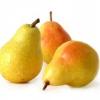The Vitamin C angle. A part of me want to believe that Of Course doctors would have tried this, but knowing how obsessed DR's are with their patented substances it's fully possible they have'nt even considered this.
If it was possible I would get IV-C of course.
I'm stocking up on ginger, quality curry powder, melatonin, garlic, MitoQ, colloidal silver, L-Lysine, AA, CoQ10, alcohol, manuca honey. Where I come from it's not possible to get any anti-viral meds without doctors recipe.
Mitochondria & The Coronavirus – The Vitamin C Connection (Part 3)
Why should you take vitamin C, ascorbic acid, to protect against infectious viruses like the recent outbreak of the novel human coronavirus in Wuhan, China [1]? The answer lies in the way how coronaviruses affect mitochondrial functions, and how vitamin C, ascorbic acid (AA) protects and enhances a comprehensive defense network from immune support to mitochondrial bioenergetic integrity.
The Role of Ascorbic Acid in Immunity
Ascorbic acid (AA) has been recognized for a long time as an antioxidant, with the ability to improve immunity [2]. More recent understanding demonstrated how AA protects against attacks by pathogens by strengthening epithelial defenses, while supporting both innate and adaptive immune systems, defending the body against invading microbes [4].
Leucocytes including neutrophils have been shown to accumulate large amounts of AA. Increasing supplementation of ascorbic acid, led to improved neutrophil motility in patients with recurrent infections [5]. The accumulation of ascorbic acid in neutrophils results in improved chemotaxis, phagocytosis, and microbial killing, while decreasing necrosis/NETosis and potential tissue damages [4].
An increasing body of emerging evidence points to the possibility that AA can positively influence lymphocyte development and function by stimulating the differentiation and proliferation of B- and T-cells [6, 7,8]. It is not surprising that infections can significantly deplete ascorbic acid levels [9]. Two controlled trials found a significant dose-dependent response in the inhibition of common cold symptoms when ascorbic acid was supplemented up to 8 g/day [10].
The ability of ascorbic acid to influence the immune system is perhaps only a part of the story in how it can protect us from infectious viruses such as the coronavirus. To fully understand how AA functions, we first need to realize that AA is not just an antioxidant, it is a REDOX molecule, used by our body to balance electron exchanges in vital biochemical processes. This is actually the key to understanding how AA truly functions inside our body.
Why is the balance of electrons important in pathogenesis initiated by coronaviruses?
Coronaviruses, Cytokine Storms & Apoptosis – A Story About Mitochondrial Membranes
The 2019 novel coronavirus (2019-nCoV), identified in patients with viral pneumonia late December 2019 in Wuhan, China [17] is a betacoronavirus that bears 88% identity to two bat-derived severe acute respiratory syndrome (SARS)-like coronaviruses, bat-SL-CoVZC45 and bat-SL-CoVZXC21, both of which were collected in 2018 in Zhoushan, eastern China [11].
Coronaviruses (CoVs) are enveloped, single-stranded RNA viruses divided into four subtypes of Alphacoronavirus (αCoV), Betacoronavirus (βCoV), Deltacoronavirus (δCoV), and Gammacoronavirus (γCoV) [12]. Alpha and beta CoVs originate from bats and rodents while delta and gamma CoVs originate from avian species.
CoVs have become important pathogens as they can induce severe acute respiratory syndrome (SARS), such as the epidemic that infected 8000 patients causing 800 deaths in China during 2002-2003. The MERS-CoV that is responsible for a persistent epidemic in the Arabian Peninsula since 2012 [13] and the SARS-CoV both originated from bats and jumped to another mammalian host before crossing species barriers to infect humans.
This novel strain from Wuhan, China bears only 79% similarity to the SARS-CoV (2002-2003) and 50% similarity to the MERS-CoV (2012) [11]. However, both the to the SARS-CoV [14] and the 2019-nCoV are able to bind to the angiotensin converting enzyme 2 receptor (ACE2) in humans [15, 16].
Cell entry is an essential component of cross-species transmission, especially for the β-CoVs [40]. The role of ACE2 receptors is significant because it is the means by which betacoronaviruses (βCoV) like SARS-CoV and 2019-nCoV can gain entry into human cells [18]. Unfortunately, the ACE2 receptor is not the only route βCoVs gain entry into host cells.
Envelope Proteins and Membrane Permeability
The 2019-nCoV and other coronaviruses like SARS-CoV encode proteins known as envelope (E) protein that can modify host cell membrane permeability in order to gain entry into host cells, promoting replication, release and proliferation. These proteins are able to form ion channels to induce membrane permeability changes [19, 23].
In the SARS-CoV, the E protein has been observed to translocate to the cell surface and is partially associated with lipid rafts [20]. This envelope (E) protein plays a diverse role in coronavirus morphogenesis, depending on the particular genus of the virus. However, the presence of the E protein has been shown to activate pathogenic inflammatory responses that may cause death in animal models and humans [21, 22].
The E protein is now accepted to be responsible for a significant proportion of the inflammation cascade caused by SARS-CoV [21]. Why would such a small protein like the E protein be able to dramatically enhance the replication of CoV’s and increase their pathogenicity and virulence?
Cytokine Storms & Apoptosis – The Mitochondria Connection
One common clinical feature of critically ill patients infected with the 2019-nCov is the high concentrations of cytokines in their plasma. Analysis showed that 2019-nCoV caused clusters of fatal pneumonia with clinical presentation similar to SARS-coV. Infected patients had a high probability of developing acute respiratory distress syndrome. 75% of patients showed bilateral pneumonia (affecting both lungs) [17].
During the outbreaks of SARS-CoV and MERS-CoV, increased amounts of proinflammatory cytokines in serum of infected patients were associated with pulmonary inflammation and extensive lung damage [24, 25, 38] IL1B, IL6, IL12, IL15, IL17,TNFα. IFNγ, IP10 and MCP1 were among the elevated cytokines found in CoV patients. High amounts of IL1B, IFNγ, IP10, and MCP1 cytokines that might have led to increased activated T-helper-1 (Th1) cell responses have also been identified in 2019-nCoV patients [26].
Similar to the SARS-CoV, absolute value of lymphocytes in most 2019-nCoV patients was markedly reduced, suggesting that 2019-nCoV main mechanism of action could be directed at lymphocytes, especially T lymphocytes.
As virus particles spread and infect other cells, the body responds with a cascading event of immune response known as a cytokine storm that causes changes in peripheral white blood cells and immune cells including lymphocytes. Cytokine storms maybe the reason why some patients progressed rapidly with acute respiratory distress syndrome and septic shock, followed by multiple organ failure and death eventually [17].
2019-nCoV and The Cytokine Storm
The term “Cytokine Storm”, first used in 1993 [26] describes a phenomenon where the inflammatory response in the immune system rages out of control [39]. The term is subsequently associated with virus infections including, Epstein-Barr virus-associated hemophagocytic lymphohistiocytosis, group A streptococcus, influenza virus, and SARS-CoV.
Cytokines are a group of proteins secreted by cells for signaling and communication in the regulation of angiogenesis, immune and inflammatory responses. These proteins can elicit a wide range of different responses depending on the cytokine and the target cell.
Inflammation in cytokine storms usually begins at a local site and is subsequently spread throughout the body via systemic circulation. Symptoms such as redness, swelling or edema, heat and pain are hallmarks of acute inflammation at a local site. These inflammatory responses often occur at the expense of local organ functions. Compensatory repair processes are usually initiated after inflammation begins, and the repair process in most cases could completely restore tissue and organ function. However, when severe inflammation damages local tissue structures, healing could only proceed with fibrosis, which often results in persistent organ dysfunction [28].
SARS-CoV is a primary example of cytokine storm responses that result in severe lung infections, leading to the development of pulmonary fibrosis. Clinical manifestations of 2019-nCoV seem to imply similar mechanisms, as infected patients exhibited high rates of bilateral pneumonia [17].
In most cytokine storms, acute-response cytokine proteins such as TNF, IL-1β, IL-8 and MCP-1 appear within minutes to hours after infection, followed by more sustained increase in IL-6, while cytokine IL-10 appears somewhat later, as the body attempts to control the acute systemic inflammatory response, as IL-10 is a counter-anti-inflammatory defence mechanism [28]. In severe infections such as those initiated by coronaviruses, the normal immune responses are manipulated by the virus that may result in an immune system gone awry.
When the body initiates systemic production of IL-10 once a cytokine storm is initiated, a phase known as ‘immunoparalysis’ takes over where neutrophils and monocyte functions are downregulated in the attempt to control and reign in systemic inflammation responses to local infections [29, 30, 31]. However, it is possible that patients may not recover from immunoparalysis even though they survived the initial cytokine storm. These patients with severe immunosuppression would be challenged with onset of severe sepsis leading to eventual death [32].
Immune homeostasis is therefore critical during the progression of cytokine storms. The inability to clear apoptotic cells in a timely manner [33] may be one of the reasons for increased virulence of coronaviruses during cytokine storms.
Mitochondria, Envelope Proteins and Apoptosis – A Tale of Depolarization
Apoptosis is an important biological function involving cell death for the purpose of regulating cell proliferation and differentiation in cell tissues, as well as the pathogenesis of various diseases [34]. The biochemical pathway required for apoptotic cell death is ubiquitous in practically ALL mammalian cells and can be activated by a variety of extra- and intracellular signals.
At present, it is widely recognized that mitochondria play a critical role in the regulation of apoptosis [35]. In the early stages of apoptosis, different pro-apoptotic proteins including cytochrome c normally found in the intermembrane space are released into the cytosol. However, the key step that initiates the apoptotic process is the PERMEABILIZATION of the outer mitochondrial membrane [36]. Envelope proteins in coronaviruses induce membrane permeabilization [19, 23].

The 3b protein encoded by the SARS-CoV has been identified in mitochondria. The localization of the protein in mitochondria is believed to contribute to SARS pathogenesis in humans [37]. While another protein encoded by coronavirus SARS-CoV known as the 3a protein has been demonstrated to induce extensive cell death by induction of mitochondrial apoptotic pathways where cytochrome c was released into cytosol [41]. Why would coronaviruses cause membrane permeability so as to inject proteins into mitochondria, causing apoptosis and cell death?
Mitochondrial Dynamics is Essential in Antiviral Immunity
Viruses, including coronaviruses, have the ability to alter cellular functions to increase proliferation. The ability to evade immune responses is perhaps the most important aspect of viral persistence and proliferation. Recent discoveries have shown that mitochondria is the central regulator of our immune system, controlling innate immune signaling and cell fate of immune cells [42].
Mitochondrial outer membranes have emerged as a major platform for important signaling molecules, and mitochondrial dynamics involving fusion and fission play critical roles in immune-cell activation [43]. Immunity and mitochondria are now accepted to be tightly interlinked, as mitochondria can regulate the activation, differentiation and survival of immune cells [44].
During viral infections, mitochondrial dynamics is altered as viruses manipulate mitochondrial dynamics to influence infection progression. The disruption of mitochondrial dynamics caused by viruses, including coronaviruses, can severely increase viral pathogenesis [45]. This is the reason why coronavirus SARS-CoV encoded 3a, 3b proteins target mitochondria to inflict damage and injury, causing apoptosis in order to deregulate the host immune system [37, 41].
During infection, damaged mitochondria would normally be cleared quickly via combined processes in mitochondrial dynamics and mitophagy. Fission is a process that facilitates the segregation of damaged mitochondria, which is subsequently removed by mitophagy. The remaining healthy mitochondria would be fused with existing mitochondrial network through fusion processes. In this way, mitochondria can maintain energy production to sustain cellular homeostasis [46].
However, if mitochondria become highly depolarized and therefore irreversibly damaged, these mitochondrial will be eliminated permanently with no possibility of being reincorporated via fusion events. The mitochondrial membrane potential (∆Ψm) becomes the determining factor in sorting out which mitochondria can be repaired and restored, and which must be segregated and permanently eliminated [45].
Membrane Permeabilization and Depolarization
The onset of mitochondrial depolarization is always coupled with depolarization of the plasma membrane potential. Studies have also shown that permeabilization of the outer mitochondrial membrane is necessary for the depolarization of membrane potential during apoptosis [47]. Mitochondrial membrane permeabilization and the loss of mitochondrial transmembrane potential, or ΔΨm depolarization are often used as biomarkers of apoptosis [53]
During mitochondrial depolarization, release of large quantities of cytochrome c slows down electron flow, interrupting the production of ATP that eventually leads to the formation of increased free radicals that will disturb cellular homeostasis [47].
The mitochondrial membrane potential (ΔΨm) is the main source of chemical energy that is responsible for driving proton re-entry from the intermembrane space through the ATP synthase back into the mitochondrial matrix [48]. The maintenance of appropriate ΔΨm is critical for mitochondrial energy production as the energy available for ATP synthesis is directly derived from mitochondrial membrane potential (ΔΨm). Depolarization translates into decreased energy available for ATP synthesis.
It is now understood that mitochondria contain individual interconnected powerhouses called cristae [49]. Individual crista is able to maintain different membrane potential along the inner mitochondrial membrane. During transient depolarization events, some cristae can maintain polarity despite the collapse of ΔΨm in adjacent cristae [50].
This means that during depolarization, the cristae that can sustain membrane potential can be rescued and fused into existing healthy mitochondria. However, fusion must happen before the cristae loses polarity permanently because reduced membrane potential can decrease the level of fusion protein OPA1, generating non-fusing mitochondria as a result [51]. Simultaneous tracking of fission and Δψm revealed that depolarized mitochondria produced during fission events are SIX times less likely to be fused within the next 10 minutes [52].
What can facilitate the rescue of depolarized mitochondria?
Ascorbic Acid, Mitochondria & Depolarization – the Plasma Membrane Redox System Revisited
Recent discoveries showed that ascorbic acid has the ability to return mitochondrial fusion rates to normal in a model for Parkinson’s disease [54]. Many earlier studies already demonstrated that ascorbic acid, vitamin C, can prevent loss of mitochondrial membrane potential. When cells were treated with uncoupling agents that can inhibit oxidative phosphorylation like CCCP (carbonyl cyanide m-chlorophenyl hydrazone), membrane potential was lowered together with the induction of membrane permeabilization, while cytochrome c proteins were released to initiate apoptosis. The addition of ascorbic acid to these cells prevented depolarization and ensuing apoptotic cascade events [55].
The ability of ascorbic acid to prevent depolarization in mitochondrial membrane confers anti-cytotoxic effects resulting in dose-dependent decrease in apoptosis in cells during in vitro experiments [56] Ionizing radiation induce mitochondrial membrane depolarization in cells and causes apoptosis [57]. Pretreating cells with ascorbic acid protected cells against ionizing radiation induced apoptosis [58].
Coronavirus & Membrane Depolarization – The Ascorbic Acid Connection
The N-protein of SARS-CoV has been demonstrated to cause apoptosis via the mitochondrial apoptotic pathway under starvation of serum. Zhang et al. in 2009 found that the N-protein could cause increased generation of reactive oxygen species, leading to loss of membrane potential, increased membrane permeability, cytochrome C release and ultimately cell death after bovine serum was withdrawn for 24 hours [59]. Why is bovine serum important? Bovine serum contains various micronutrients [60] but most of all, it contains ascorbic acid [61].
There is no doubt that coronaviruses like 2019-nCoV, SARS-CoV, and MERS-CoV target mitochondria to induce apoptosis in order to disrupt host immune system in order to facilitate proliferation. Protecting mitochondrial dynamics in fusion and fission events allow depolarized mitochondria to regain functional control. How does ascorbic acid maintain membrane potential to protect mitochondrial dynamics?
CYB5R3 & VDAC1 – A Tale of Membrane Potential & Ascorbic Acid
There is an extensive, dynamic and influential network of plasma membrane enzymes that regulate redox balance in the cellular environment. These enzymes were not formally classified until the early 2000’s because they were primarily NADH or NADPH oxidases that had been known under various other names based upon their physiological electron acceptors. Most of these plasma membrane redox enzymes that have been identified so far use ascorbic acid almost EXCLUSIVELY as their electron acceptor and donor, due to the unique characteristics of ascorbic acid [62].
The CYB5R plasma membrane enzyme is encoded by four genes CYB5R1, CYB5R2, CYB5R3 and CYB5R4. The isoform CYB5R3 has ubiquitous cytoplasmic expression and its membrane-bound form is present in mitochondria, nucleus, endoplasmic reticulum and plasma membrane [64].
The CYB5R3 (membrane-bound NADH:cytochrome b5 oxidoreductase 3) enzyme catalyzes rapid exchange of electrons between ascorbate and its one electron oxidation metabolite, ascorbyl free radical (AFR), also known as semidehydroascorbate. The CYB5R3 enzyme uses electrons from NADH to convert AFR back into ascorbate [64].
CYB5R3 is located on the outer mitochondrial membrane and is functionally connected to VDAC1 (voltage-dependent anion channel 1). VDAC1 is the most abundant protein found on the outer mitochondrial membrane (OMM) [64]. The Cyb5R3/VDAC1 system is responsible for the conversion of AFR into ascorbate. VDAC1 has been shown to preserve mitochondrial membrane integrity, keeping cells intact when exposed to carcinogens that could induce depolarization and apoptosis [65, 66].
Mice bred without CYB5R3 show a loss of mitochondrial biogenesis, accompanied by 30% loss of total ATP, 50% loss of Complex IV activity, and 25% loss of Complex IV protein quality [67]. Why is CYB5R3 essential for maintaining normal functioning of mitochondria, including activity of mitochondrial ETC, oxygen consumption, ATP production and resistance to oxidative stress? CYB5R3/VDAC1 is actually an additional energy generating pathway that utilizes ascorbate/AFR as electron donors and acceptors [68].
When oxidative phosphorylation activity is not supported by the respiratory chain proteins due to collapsed membrane potential (depolarization), the activity of the CYB5R3/VDAC1 system is able to generate an electrochemical membrane potential catalyzed by electron transfers [69, 70, 71]. CYB5R3/VDAC1 transfer electrons from cytosolic NADH into mitochondria, utilizing Complex IV [69, 72]. Most surprisingly, when ascorbic acid, instead of NADH is supplied to intact mitochondria, the same non-enzymatic induction of this alternative energy production pathway was observed, where there was oxygen uptake, cytochrome c reduction and ascorbate oxidation [69,72].
The rapid conversion of AFR back to ascorbate using NADH as electron donor restores the ascorbate pool and maintains a high NAD+/NADH ratio in cells [68]. However, if there is a lack of NADH, then it may be necessary to maintain a constant supply of fresh ascorbate so that CYB5R3/VDAC1 can utilize electrons from ascorbate to generate membrane potential to rescue depolarizing mitochondria.
During severe infections, the ability of mitochondria to utilize plasma redox system CYB5R3/VDAC1 to generate transient supply of alternate energy would provide mitochondria the opportunity to maintain fusion and fission events to clear damaged mitochondria. Ascorbic acid provides electrons to CYB5R3/VDAC1 when NADH is inadequate as a result of disrupted oxidative phosphorylation.
The importance of a continuous supply of adequate ascorbic acid during cytokine storms induced by coronavirus infections cannot be underestimated.
Have you had your AA today?
References
[1] Novel Coronavirus 2019 Situation Summary, Wuhan, China | CDC https://www.cdc.gov/coronavirus/2019-ncov/summary.html
[2] Ascorbic acid: its role in immune system and chronic inflammation diseases. – PubMed – NCBI https://www.ncbi.nlm.nih.gov/pubmed/24766384
[3] Mechanisms of attenuation of abdominal sepsis induced acute lung injury by ascorbic acid. – PubMed – NCBI https://www.ncbi.nlm.nih.gov/pubmed/22523283
[4] Vitamin C and Immune Function https://www.ncbi.nlm.nih.gov/pmc/articles/PMC5707683/
[5] Effects of ascorbate on leucocytes: Part III. In vitro and in vivo stimulation of abnormal neutrophil motility by ascorbate. – PubMed – NCBI https://www.ncbi.nlm.nih.gov/pubmed/550365
[6] Lymphocytes 2018_Influence of Vitamin C on Lymphocytes: An Overview https://www.ncbi.nlm.nih.gov/pmc/articles/PMC5874527/
[7] Technical advance: ascorbic acid induces development of double-positive T cells from human hematopoietic stem cells in the absence of stromal cells. – PubMed – NCBI https://www.ncbi.nlm.nih.gov/pubmed/25157026/
[8] Promotion of IL-4- and IL-5-dependent differentiation of anti-mu-primed B cells by ascorbic acid 2-glucoside. – PubMed – NCBI https://www.ncbi.nlm.nih.gov/pubmed/19201381/
[9] Vitamin C and Infection | Nutrition Reviews | Oxford Academic https://academic.oup.com/nutritionreviews/article-abstract/1/7/202/1874601?redirectedFrom=PDF
[10] Vitamin C and Infections. – PubMed – NCBI https://www.ncbi.nlm.nih.gov/pubmed/28353648/
[11] Genomic characterisation and epidemiology of 2019 novel coronavirus: implications for virus origins and receptor binding – The Lancet https://www.thelancet.com/journals/lancet/article/PIIS0140-6736(20)30251-8/fulltext
[12] Interspecies transmission and emergence of novel viruses: lessons from bats and birds. – PubMed – NCBI https://www.ncbi.nlm.nih.gov/pubmed/23770275
[13] Middle East respiratory syndrome coronavirus: another zoonotic betacoronavirus causing SARS-like disease. – PubMed – NCBI https://www.ncbi.nlm.nih.gov/pubmed/25810418
[14] ACE2 receptor expression and severe acute respiratory syndrome coronavirus infection depend on differentiation of human airway epithelia. – PubMed – NCBI https://www.ncbi.nlm.nih.gov/pubmed/16282461
[15] Single-cell RNA expression profiling of ACE2, the putative receptor of Wuhan 2019-nCov | bioRxiv https://www.biorxiv.org/content/10.1101/2020.01.26.919985v1
[16] Functional assessment of cell entry and receptor usage for lineage B β-coronaviruses, including 2019-nCoV | bioRxiv https://www.biorxiv.org/content/10.1101/2020.01.22.915660v1.full
[17] Epidemiological and clinical characteristics of 99 cases of 2019 novel coronavirus pneumonia in Wuhan, China: a descriptive study – The Lancet https://www.thelancet.com/journals/lancet/article/PIIS0140-6736(20)30211-7/fulltext
[18] Functional assessment of cell entry and receptor usage for lineage B β-coronaviruses, including 2019-nCoV | bioRxiv https://www.biorxiv.org/content/10.1101/2020.01.22.915660v1.full#ref-20
[19] Expression of SARS-coronavirus envelope protein in Escherichia coli cells alters membrane permeability. – PubMed – NCBI https://www.ncbi.nlm.nih.gov/pubmed/15522242/
[20] Biochemical and functional characterization of the membrane association and membrane permeabilizing activity of the severe acute respiratory syndrome coronavirus envelope protein.- PubMed – NCBI https://www.ncbi.nlm.nih.gov/pubmed/16507314/
[21] CORONAVIRUS VIRULENCE GENES WITH MAIN FOCUS ON SARS-CoV ENVELOPE GENE https://www.ncbi.nlm.nih.gov/pmc/articles/PMC4261026/
[22] Coronavirus envelope protein: current knowledge | Virology Journal | Full Text https://virologyj.biomedcentral.com/articles/10.1186/s12985-019-1182-0
[23] Genomic characterization of the 2019 novel human-pathogenic coronavirus isolated from a patient with atypical pneumonia after visiting Wuhan: Emerging Microbes & Infections: Vol 9, No 1 https://www.tandfonline.com/doi/full/10.1080/22221751.2020.1719902
[24] Plasma inflammatory cytokines and chemokines in severe acute respiratory syndrome https://www.ncbi.nlm.nih.gov/pmc/articles/PMC1808997/
[25] MERS-CoV infection in humans is associated with a pro-inflammatory Th1 and Th17 cytokine profile. – PubMed – NCB Ihttps://www.ncbi.nlm.nih.gov/pubmed/29414327
[26] Clinical features of patients infected with 2019 novel coronavirus in Wuhan, China – The Lancet https://www.thelancet.com/journals/lancet/article/PIIS0140-6736(20)30183-5/fulltext
[27] Cytokine storm of graft-versus-host disease: a critical effector role for interleukin-1. – PubMed – NCBI https://www.ncbi.nlm.nih.gov/pubmed/8442093
[28] Into the Eye of the Cytokine Storm https://www.ncbi.nlm.nih.gov/pmc/articles/PMC3294426/
[29] Development of the adult respiratory distress syndrome: progressive alteration of neutrophil chemotactic and secretory processes. https://www.ncbi.nlm.nih.gov/pmc/articles/PMC1900478/
[30] Monocyte deactivation in septic patients: restoration by IFN-gamma treatment. – PubMed – NCBI https://www.ncbi.nlm.nih.gov/pubmed/9176497
[31] Normal responses to injury prevent systemic inflammation and can be immunosuppressive. – PubMed – NCBI https://www.ncbi.nlm.nih.gov/pubmed/11179099
[32] Persisting low monocyte human leukocyte antigen-DR expression predicts mortality in septic shock. – PubMed – NCBI https://www.ncbi.nlm.nih.gov/pubmed/16741700
[33] Apoptotic Cells Induced Signaling for Immune Homeostasis in Macrophages and Dendritic Cells https://www.ncbi.nlm.nih.gov/pmc/articles/PMC5661053/
[34] Apoptosis: A Basic Biological Phenomenon with Wideranging Implications in Tissue Kinetics | British Journal of Cancer https://www.nature.com/articles/bjc197233
[35] Mitochondrial regulation of apoptotic cell death – ScienceDirect https://www.sciencedirect.com/science/article/abs/pii/S037842740300479X
[36] Multiple pathways of cytochrome c release from mitochondria in apoptosis – ScienceDirect https://www.sciencedirect.com/science/article/pii/S0005272806000715
[37] Mitochondrial location of severe acute respiratory syndrome coronavirus 3b protein. – PubMed – NCBI https://www.ncbi.nlm.nih.gov/pubmed/16682811
[38] Active Replication of Middle East Respiratory Syndrome Coronavirus and Aberrant Induction of Inflammatory Cytokines and Chemokines in Human Macrophages: Implications for Pathogenesis | The Journal of Infectious Diseases | Oxford Academic ttps://academic.oup.com/jid/article/209/9/1331/884110
[39] Mapping the innate signaling cascade essential for cytokine storm during influenza virus infection | PNAS https://www.pnas.org/content/111/10/3799
[40] Host cell proteases: critical determinants of coronavirus tropism and pathogenesis https://www.ncbi.nlm.nih.gov/pmc/articles/PMC4465284/
[41] Severe acute respiratory syndrome coronavirus 3a protein activates the mitochondrial death pathway through p38 MAP kinase activation https://www.ncbi.nlm.nih.gov/pubmed/18632968
[42] Mitochondria as central hub of the immune system – ScienceDirect https://www.sciencedirect.com/science/article/pii/S2213231719303076
[43] Mitochondria are the powerhouses of immunity | Nature Immunology https://www.nature.com/articles/ni.3704?draft=marketing
[44] Diverse Roles of Mitochondria in Immune Responses: Novel Insights Into Immuno-Metabolism | Immunology https://www.frontiersin.org/articles/10.3389/fimmu.2018.01605/full
[45] Mitochondrial dynamics and viral infections: A close nexus – ScienceDirect https://www.sciencedirect.com/science/article/pii/S0167488915000099
[46] The essential role of mitochondrial dynamics in antiviral immunity https://www.ncbi.nlm.nih.gov/pmc/articles/PMC5988924/
[47] Outer mitochondrial membrane permeabilization during apoptosis triggers caspase-independent mitochondrial and caspase-dependent plasma membrane potential depolarization: a single-cell analysis | Journal of Cell Science https://jcs.biologists.org/content/116/3/525
[48] Coupling of Phosphorylation to Electron and Hydrogen Transfer by a Chemi-Osmotic type of Mechanism | Nature https://www.nature.com/articles/191144a0
[49] Cristae – The Powerhouses Within – EvolutaMente.it https://www.evolutamente.it/cristae-the-powerhouses-within/
[50] Individual cristae within the same mitochondrion display different membrane potentials and are functionally independent | The EMBO Journal https://www.embopress.org/doi/full/10.15252/embj.2018101056
[51] Fission and selective fusion govern mitochondrial segregation and elimination by autophagy https://www.ncbi.nlm.nih.gov/pmc/articles/PMC2234339/
[52] Fission and selective fusion govern mitochondrial segregation and elimination by autophagy. – PubMed – NCBI https://www.ncbi.nlm.nih.gov/pubmed/18200046/
[53] Role of mitochondrial membrane permeabilization and depolarization in platelet apoptosis – Leytin – 2018 – British Journal of Haematology – Wiley Online Library https://onlinelibrary.wiley.com/doi/full/10.1111/bjh.14903
[54] Exploring the Effect of Rotenone—A Known Inducer of Parkinson’s Disease—On Mitochondrial Dynamics in Dictyostelium discoideum https://www.ncbi.nlm.nih.gov/pmc/articles/PMC6262481/
[55] Vitamin C enters mitochondria via facilitative glucose transporter 1 (Glut1) and confers mitochondrial protection against oxidative injury | The FASEB Journal https://www.fasebj.org/doi/full/10.1096/fj.05-4107com?ck=nck&legid=fasebj%3B19%2F12%2F1657&cited-by=yes
[56] Vitamin C Antagonizes the Cytotoxic Effects of Antineoplastic Drugs | Cancer Research https://cancerres.aacrjournals.org/content/68/19/8031
[57] Ionizing radiation-induced, mitochondria-dependent generation of reactive oxygen/nitrogen. – PubMed – NCBI https://www.ncbi.nlm.nih.gov/pubmed/11358802
[58] Ascorbic acid inhibits apoptosis induced by X irradiation in HL60 myeloid leukemia cells. – PubMed – NCBI https://www.ncbi.nlm.nih.gov/pubmed/10521923?dopt=Abstract
[59] SARS-CoV Nucleocapsid Protein Induced Apoptosis of COS-1 Mediated by the Mitochondrial Pathway: Artificial Cells, Blood Substitutes, and Biotechnology: Vol 35, No 2 https://www.tandfonline.com/doi/full/10.1080/10731190601188422#
[60] The Influence of Micronutrients in Cell Culture: A Reflection on Viability and Genomic Stability https://www.hindawi.com/journals/bmri/2013/597282/
[61] Chiral analysis of ascorbic acid in bovine serum using ultrathin molecular imprinted polyaniline/graphite electrode – ScienceDirect https://www.sciencedirect.com/science/article/pii/S1572665717302953
[62] Thioredoxin Reductase AFR NADH NADPH_Molecular biology of mammalian AFR reductases https://www.researchgate.net/publication/236015879_Molecular_biology_of_mammalian_AFR_reductases
[63] Characterization of the Trans-plasma Membrane Electron Transport System in the Myelin Membrane https://scholars.wlu.ca/cgi/viewcontent.cgi?referer=https://www.google.com/&httpsredir=1&article=2785&context=etd
[64] External mitochondrial NADH-dependent reductase of redox cyclers: VDAC1 or Cyb5R3? – ScienceDirect https://www.sciencedirect.com/science/article/abs/pii/S0891584914002573?via%3Dihub
[65] Paraquat toxicity induced by voltage-dependent anion channel 1 acts as an NADH-dependent oxidoreductase. – PubMed – NCBI https://www.ncbi.nlm.nih.gov/pubmed/19717555
[66] Paraquat induces oxidative stress and neuronal cell death; neuroprotection by water-soluble Coenzyme Q10. – PubMed – NCBI https://www.ncbi.nlm.nih.gov/pubmed/15519605
[67]Cytochrome B5 Reductase 3 Is Essential for Cardiomyocyte Function | Circulation https://www.ahajournals.org/doi/abs/10.1161/circ.136.suppl_1.20733
[68] Vitamin C versus Cancer: Ascorbic Acid Radical and Impairment of Mitochondrial Respiration? https://new.hindawi.com/journals/omcl/2020/1504048/
[69] Modulation of Cytochrome c-Mediated Extramitochondrial NADH Oxidation by Contact Site Density – ScienceDirect https://www.sciencedirect.com/science/article/abs/pii/S0006291X99907878
[70] Membrane potential generation coupled to oxidation of external NADH in liver mitochondria. – PubMed – NCBI https://www.ncbi.nlm.nih.gov/pubmed/9762923
[71] Cytochrome c-induced cytosolic nicotinamide adenine dinucleotide oxidation, mitochondrial permeability transition, and apoptosis. – PubMed – NCBI https://www.ncbi.nlm.nih.gov/pubmed/12573279
[72] Porin and cytochrome oxidase containing contact sites involved in the oxidation of cytosolic NADH. – PubMed – NCBI https://www.ncbi.nlm.nih.gov/pubmed/15752713































 This topic is locked
This topic is locked




























